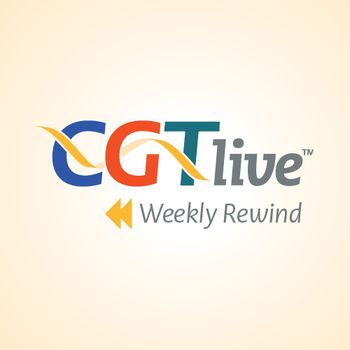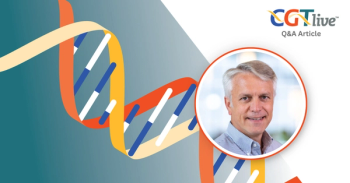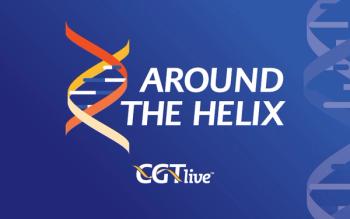
Data Roundup: May 2025 Features Updates from ASGCT, ASCO, and More
Catch up on any of the key data updates you may have missed last month, with coverage highlights from the CGTLive™ team.
Last month, May 2025, the CGTLive® team was diligently tracking the latest data readouts and published literature on cell and gene therapies within oncology, neurology, rare diseases, and more.
As more and more innovative therapies enter the clinical trial field, more data is accrued every month, buoying excitement in the field and sometimes making or breaking the fates of small biotech companies. Last month delivered data updates from
Click the read more buttons for more details and information about each update.
J&J's XLRP Gene Therapy Bota-Vec Falls Short of Primary End Points
May 7, 2025 - Data from the LUMEOS phase 3 clinical trial demonstrated a rare disease gene therapy referred to as botaretigene sparoparvovec (bota-vec) has failed to improve the vision-guided mobility of patients with X-linked retinitis pigmentosa (XLRP).
Johnson & Johnson (J&J) purchased the full rights to bota-vec, an investigational gene therapy utilizing an adeno-associated virus to move a functional copy of the retinitis pigmentosa GTPase regulator (RPGR) gene to the retina, in a 2023 deal with MeiraGTx.
A total of 95 patients were enrolled in LUMEOS and 58 of these patients received bota-vec in a single low or high dose. A progressive eye disease, XLRP constitutes a severe and rare form of retinitis pigmentosa. Because XLRP most commonly appears in men, with manifestation occurring in childhood, the majority of the patients enrolled were male.
Spur Therapeutics’ Gene Therapy SBT101 Generally Well Tolerated in Phase 1 Trial for Adrenoleukodystrophy
May 13, 2025 - Spur Therapeutics’ SBT101, an investigational adeno-associated virus (AAV) vector-based gene therapy intended to treat X-linked adrenoleukodystrophy (ALD), was deemed “generally well-tolerated" in new safety data from the ongoing phase 1/2 PROPEL clinical trial (NCT05394064). The data were presented in a poster at the ASGCT 28th Annual Meeting.
The study results reported included 8 men with ages ranging from 19 to 36 years, 4 of whom had received a lower dose of SBT101 (1.0x1014 vg, cohort 1) and 4 of whom had received a higher dose of SBT101 (3.0x1014 vg, cohort 2). As of the April 21, 2025, data cut off, the most frequently reported treatment-emergent adverse events (TEAEs), defined as those with 3 or more events having occurred across all patients, were headache, muscular weakness, muscoskeletal stiffness, micturition urgency, interferon gamma assay positive, back pain, influenza, acne, asthenia, fatigue, insomnia, and paraesthesia.
In cohort 1, 3 patients (75%) experienced at least 1 serious TEAE, with 5 total serious TEAEs having occurred in this cohort. The serious TEAEs included gastroenteritis, pyelonephritis, muscular weakness, myelitis transverse, and aspiration. In cohort 2, only 1 patient (25%) experienced a single serious TEAE, a case of deep vein thrombosis, with the other patients in the cohort having not experienced any serious TEAEs.
Rocket’s PKP2-Arrhythmogenic Cardiomyopathy Gene Therapy RP-A601 Improves or Stabilizes Heart Function in Phase 1 Trial
May 16, 2025 - Rocket Pharmaceuticals’ RP-A601, an investigational AAV vector-based gene therapy intended to treat plakophilin-2 related Arrhythmogenic Cardiomyopathy (PKP2-ACM), has demonstrated the ability to stabilize or improve heart function in patients treated in a phase 1 clinical trial (NCT05885412). The updated data from the study were presented at the ASGCT 28th Annual Meeting.
The data presented came from 3 patients treated in the trial who had a follow-up time of up to 12 months. All 3 patients received the same dose of RP-A601, 8x1013 GC/kg. As of the April 2025 data cut off for efficacy, all 3 patients had shown increases in expression of PKP2 protein on cardiac biopsies. Furthermore, 1 of the 2 patients who had low PKP2 expression at baseline showed an increase of approximately 110% in PKP2 relative to total cell protein from baseline to 6 months of follow-up and the other of these 2 patients showed an increase of approximately 398%. Rocket additionally pointed out that in all 3 patients desmosomal localization of PKP2, Desmocollin-2, and Cadherin-2, was promoted by treatment with RP-A601.
Rocket also noted that with regard to arrhythmia burden, heart function, and quality of life, improvement or stabilization was preliminarily suggested by observations in the trial. Normal right ventricular systolic function was seen in all patients at their most recent follow-up. In the 2 patients who were followed for at least 6 months, an improvement of of 34-41 points in Kansas City Cardiomyopathy Questionnaire (KCCQ)-12 score was reported along with an improvement from New York Heart Association (NYHA) Class II at baseline to Class I. A reduction in premature ventricular contractions of 9% to 63% was observed when evaluated from baseline to 6 to 12 months after treatment. Rocket also stated that at 6 months posttreatment the 1 patient who had nonsustained ventricular tachycardias (NSVTs) achieved a reduction from 5 NSVT episodes per 24-hour period to 0 NSVT episodes per 24-hour period. The company also noted that at 6 months posttreatment 1 patient achieved a decrease in electrocardiogram leads with T-wave inversions from 6 to 2.
Cilta-Cel Benefit Consistent Across High-Risk Subgroups of Multiple Myeloma
June 1, 2025 - Ciltacabtagene autoleucel (cilta-cel; Carvykti) improved progression-free survival (PFS) compared with standard of care (SOC) across all subgroups of patients with relapsed/refractory multiple myeloma, including in those with extramedullary disease (EMD) and regardless of prior lines of therapy, according to a subgroup analyses from the phase 3 CARTITUDE-4 trial (NCT04181827) presented at the 2025 ASCO Annual Meeting.
In the analysis of the study, cilta-cel consistently improved PFS with trends toward improvement in overall survival (OS) compared with SOC across all subgroups, including those with high-risk cytogenetics, EMD, and regardless of whether it was given in the first-, second-, or third-line setting. In those with high-risk features, the median PFS with cilta-cel was 37.1 months compared with 10.3 months for SOC. In the standard risk group, the median PFS with cilta-cel was not yet reached compared with 20.6 months with SOC.
“This is a superior therapy in terms of efficacy for PFS and there was a trend for overall survival in each of these subgroups,” lead investigator Surbhi Sidana, MD, from Stanford University School of Medicine, said in an interview about the study. “As cilta-cel is now available as second-line therapy, after first relapsed, these data are very reassuring, especially seeing that patients with 1 prior line of therapy also have a PFS benefit vs 2 or 3. I think these data are very reassuring to use earlier line cilta-cel.”
Newsletter
Stay at the forefront of cutting-edge science with CGT—your direct line to expert insights, breakthrough data, and real-time coverage of the latest advancements in cell and gene therapy.


































